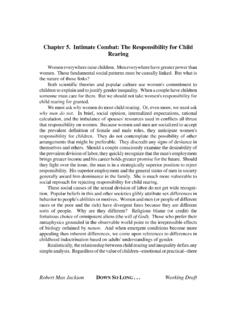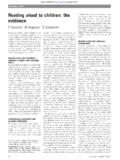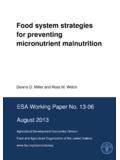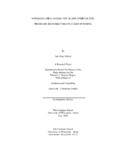Transcription of St Matthias School Feedback and Marking Policy
1 1 St Matthias School Feedback and Marking Policy Date adopted 22 June 2017 Notes Last Reviewed 22 June 2017 School Policy Review Cycle Annually Author/Owner Governing Body At St Matthias , we recognise the importance of Feedback as an integral part of the teaching and learning cycle, and aim to maximise the effectiveness of its use in practice. We are mindful also of the research surrounding effective Feedback and the workload implications of written Marking , as well as research from cognitive science regarding the fragility of new learning. Our Policy is underpinned by the evidence of best practice from the Education Endowment Foundation and other expert organisations.
2 The Education Endowment Foundation and other expert organisations. The Education Endowment Foundation research shows that effective Feedback should: Redirect or refocus either the teacher s or the learner s actions to achieve a goal Be specific, accurate and clear Encourage and support further effort Be given sparingly so that it is meaningful Put the onus on students to correct their own mistakes, rather than providing correct answers for them Alert the teacher to misconceptions, so that the teacher can address these in subsequent lessons. Notably, the Department for Education s research into teacher workload has highlighted written Marking as a key contributing factor to workload.
3 As such we have investigated alternatives to written Marking which can provide effective Feedback in line with the EEF s recommendations, and those of the DfE s expert group which emphasises that Marking should be: Meaningful, manageable and motivating. We have also taken note of the advice provided by the NCETM (National Centre for Excellence in Teaching Mathematics) that the most important activity for teachers is the teaching itself, supported by the design and preparation of lessons. Key Principles Our Policy on Feedback has at its core a number of principles: The sole focus of Feedback should be to further children s learning; Evidence of Feedback is incidental to the process; we do not provide additional evidence for external verification; Feedback should empower children to take responsibility for improving their own work; it should not take away from this responsibility by adults doing the hard thinking work for the pupil.
4 Written comments should only be used as a last resort for the very few children who otherwise are unable to locate their own errors, even after guided modelling by the teacher. 2 Children should receive Feedback either within the lesson itself or it in the next appropriate lesson. The next step is usually the next lesson. Feedback is a part of the School s wider assessment processes which aim to provide an appropriate level of challenge to pupils in lessons, allowing them to make good progress. New learning is fragile and usually forgotten unless explicit steps are taken over time to revisit and refresh learning. Teachers should be wary of assuming that children have securely learnt material based on evidence drawn close to the point of teaching it.
5 Therefore, teachers will need to get Feedback at some distance from the original teaching input when assessing if learning is now secure. Within these principles, our aim is to make use of the good practice approaches outlined by the EEF toolkit to ensure that children are provided with timely and purposeful Feedback that furthers their learning, and that teachers are able to gather Feedback and assessments that enable to adjust their teaching both within and across a sequence of lessons. Feedback and Marking in practice It is vital that teachers evaluate the work that children undertake in lessons, and use information obtained from this to allow them to adjust their teaching.
6 Feedback occurs at one of four common stages in the learning process: 1. Immediate Feedback at the point of teaching 2. Summary Feedback - at the end of a lesson/task 3. Next lesson feedforward further teaching enabling the children to identify and improve for themselves areas for development identified by the teacher upon review of work after a previous lesson had finished 4. Summative Feedback tasks planned to give teachers definitive Feedback about whether a child has securely mastered the material under study These practices can be seen in the following practices: Type What it looks like Evidence (for observers) Immediate Includes teacher gathering Feedback from teaching within the course of the lesson, including mini-whiteboards, bookwork, etc.
7 Takes place in lessons with individuals or small groups Often given verbally to pupils for immediate action May involve use of a teaching assistant to provide support of further challenge May re-direct the focus of teaching or the task Lesson observations/learning walks Summary Takes place at the end of a lesson of activity Often involves whole groups or classes Provides an opportunity for evaluation of learning in the lesson May take form of self or peer- assessment against an agreed set of criteria May take the form of a quiz, test or score on a game In some cases, may guide a teacher s further use of review Feedback , focusing on areas of need Lesson observations/learning walks Some evidence of self and peer-assessment Quiz and test results may be recorded in books or logged separately by the teacher 3 Feedforward: the next step is the next lesson For writing in particular, often a large part of the next lesson will be spent giving Feedback to the class about strengths and areas for development, and giving time for development areas to be worked on and improved through proof reading and editing their work.
8 Do now s are analysed daily and errors and misconceptions addressed in subsequent lessons, in particular in maths meetings. Lesson observations/learning walks Evidence in books of pupils editing and redrafting their work in green pen Summative Check it activities End of unit or term tests or quizzes Check it activities in books Quiz and test results Guidance for teachers Proof reading and editing in writing lessons Most writing lessons will be followed up with an editing lesson where children receive whole class Feedback about strengths and areas for development and direct teaching about to help them identify and address their own weaknesses.
9 Teachers will have looked at pupils work soon after the previous lesson and identified strengths and weaknesses, looking at both the technical accuracy of the writing; spelling errors, punctuation omissions, and other transcription mishaps as well as things to do with the sophistication of the writing; the actual content. Where individual children have done particularly well or badly at something, s/he will make a note and use these in the lesson as a teaching point. The editing lesson will be divided into two sections proofreading Changing punctuation, spelling, handwriting and grammar mistakes. editing Improving their work to improve the composition.
10 The proofreading section will usually be short: about 10 minutes or so, whereas the editing element may take the rest of the lesson. The teacher will share extracts from pupils work, using either the visualiser or by typing out a couple of lines and displaying them on the interactive whiteboard, at first showing good examples of work. For example, within the proof reading section, the teacher might showcase someone whose letter heights have the ascenders and descenders just right, then asking pupils to look at their work and rewrite one sentence from it, really making sure they are paying attention to letter heights. Then s/he might share a section of text with poor punctuation (usually anonymously) and reteach the class the various punctuation rules.







